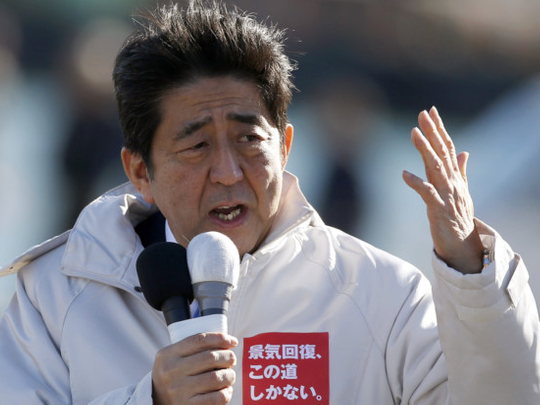
If Japanese Prime Minister Shinzo Abe wants to be remembered as more than a two-time failure as a leader, he should learn from the last one to achieve anything big: His political mentor, Junichiro Koizumi. Yes, I know. Koizumi’s five-year premiership ended feebly in 2006. But early on, Koizumi’s signature slogan — “reform without sacred cows” — made him wildly popular with Japanese tired of years of drift and cronyism in Tokyo. In speeches and blog posts, Koizumi urged voters to pressure his own Liberal Democratic Party (LDP) to support change. With public opinion firmly on his side, the “maverick”, as Koizumi was called, was able to prod banks to write down bad loans from the 1980s. He cut wasteful public-works spending and privatised huge entities like Japan Post. He cast aside diplomatic niceties to visit North Korea.
Unfortunately, when Koizumi lost public support — largely because of distractions like his multiple visits to the controversial Yasukuni Shrine — he lost his nerve. Now, in the halls of Nagatacho, Tokyo’s Capitol Hill, Koizumi is remembered less as Japan’s Margaret Thatcher or Ronald Reagan than as a cautionary tale. As he kicks off his campaign ahead of the December 14 elections, Abe should pay heed. His own reform drive is stuck in first gear. Aside from massive Bank of Japan stimulus, ‘Abenomics’ can claim few concrete accomplishments as yet. Abe has made no real progress on loosening labour markets, lowering trade barriers, cutting red tape or increasing innovation. An April sales tax hike sent the economy back into recession, while concern about Japan’s debt burden prompted Moody’s last Monday to downgrade the country to the same level as Bermuda, Oman and the Czech Republic.
In a less gerrymandered and more representative democracy, Abe’s LDP would probably take a beating on December 14. The opposition Democratic Party of Japan is not expected to put up much of a fight either. Still, given his approval rating — below 50 per cent and falling — Abe will almost certainly come out of the election with a weaker mandate than he had two years ago.
Structural reform
That should not be a signal for him to scale back his ambitions as Koizumi did — quite the opposite. The Japanese want Abenomics to work, and in theory, the reforms Abe has discussed are the right ones. Ordinary citizens simply are not feeling its benefits yet. Disproportionately, those are going to huge national champions like Toyota and Sony, whose exports are benefiting from a weaker yen. As Koizumi did early on, Abe should appeal directly to the Japanese people to lend a renewed push to his structural reforms. Once the votes are counted, Abe should unveil Abenomics 2.0 with a very specific timeline: Next month, the parliament will move to deregulate labour markets, the month after to tweak the tax system to support startups. He should lay out quotas for corporations to increase the number of women in leadership positions.
Abe’s message should be: My fellow Japanese, this is our last chance to avoid irrelevance as China, India and Indonesia reshape Asia’s economic landscape — and I need your help. Please call your local Diet member and demand they get behind my policies. Second chances are incredibly rare in politics, let alone a third. Abe’s return to the premier’s office in 2012 was an opportunity to erase the embarrassment over his scandal-ridden 2006-2007 turn there. Voters seem willing to give him one more chance because they still hope he can shake Japan out of its lethargy. But he will not get another.
William Pesek is a Bloomberg View columnist based in Tokyo and writes on economics, markets and politics throughout the Asia-Pacific region.












